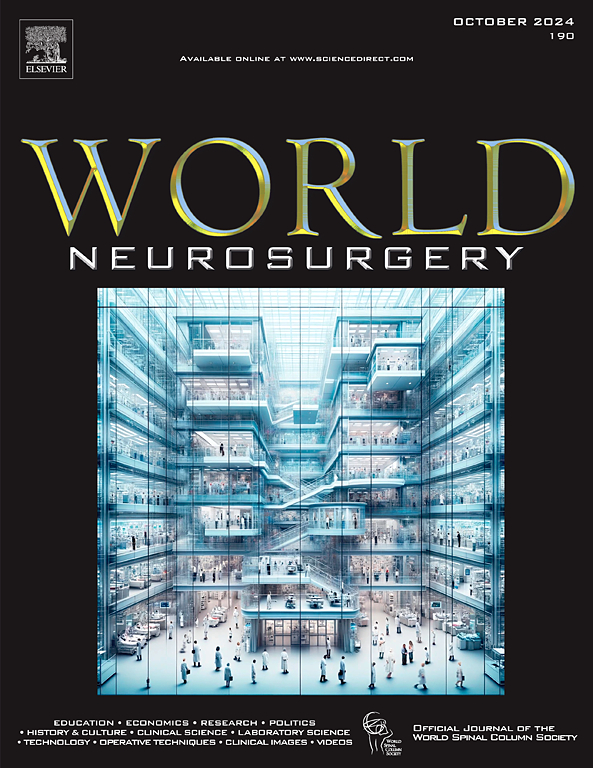The Mystery of the Claustrum, the Front Wall of the Brain: From Early Anatomic Discovery to Modern Insights
IF 1.9
4区 医学
Q3 CLINICAL NEUROLOGY
引用次数: 0
Abstract
Objective
The claustrum, a thin layer of gray matter between the insular cortex and putamen, has been a subject of anatomical and functional curiosity for centuries. Although early anatomical descriptions provide some insights, modern neuroimaging and neurosurgical studies have reignited interest in its structure and function. This study examines the historical evolution of the claustrum's terminology and clinical significance.
Methods
A comprehensive review was conducted, analyzing neuroanatomical texts from the 15th to 20th centuries and contemporary academic publications on the claustrum. The investigation focused on anatomical descriptions, variations in nomenclature, and the claustrum's neurosurgical significance.
Results
The first known depiction of the claustrum appeared in the work of Vicq d’Azyr (1786), followed by formal naming as the vormauer (claustrum) by Burdach (1822). Subsequent terminology included N. taeniaeformis (Arnold, 1838) and avant-mur (Dejerine, 1895). Neurodevelopmental research by Puelles (2017, 2022) provided genetic evidence distinguishing it from adjacent structures. Functionally, Crick and Koch (2005) proposed its role in consciousness as a sensory integrator. Still, Yaşargil's neurosurgical observations indicate that tumor invasion or iatrogenic damage of the claustrum in cases of insular glioma does not result in impaired consciousness, prompting a reassessment of its functional role.
Conclusions
This review synthesizes historical and contemporary perspectives to highlight the claustrum's relevance in neuroscience and neurosurgery. Although its exact function remains debated, ongoing research continues to shed light on its role in brain connectivity and integration. Understanding the claustrum's structure and function may lead to novel insights into sensory processing, cognition, and potential neurosurgical applications.
脑前壁屏状体之谜:从早期解剖学发现到现代见解。
目的:屏状体是介于岛叶皮层和壳核之间的一层薄薄的灰质,几个世纪以来一直是解剖学和功能上的好奇对象。尽管早期的解剖学描述提供了一些见解,但现代神经影像学和神经外科研究重新点燃了人们对其结构和功能的兴趣。本研究考察了屏状体术语的历史演变和临床意义。方法:对15 ~ 20世纪的神经解剖学文献和当代关于屏状体的学术出版物进行综合分析。调查的重点是解剖描述,在命名的变化,和屏状体的神经外科意义。结果:已知的首个闭孔虫描述出现在Vicq d'Azyr(1786)的作品中,随后由burach(1822)正式命名为vormauer(闭孔虫)。随后的术语包括N. taeniaeformis (Arnold, 1838)和avant-mur (Dejerine, 1895)。Puelles(2017,2022)的神经发育研究提供了将其与相邻结构区分开来的遗传证据。在功能上,克里克和科赫(2005)提出了它在意识中作为感觉整合器的作用。尽管如此,yaargil的神经外科观察表明,在岛状胶质瘤病例中,肿瘤侵袭或医源性损伤的屏状体不会导致意识受损,这促使人们重新评估其功能作用。结论:这篇综述综合了历史和当代的观点来强调屏状体在神经科学和神经外科中的相关性。尽管它的确切功能仍有争议,但正在进行的研究继续揭示它在大脑连接和整合中的作用。了解屏状体的结构和功能可能会对感觉处理、认知和潜在的神经外科应用产生新的见解。
本文章由计算机程序翻译,如有差异,请以英文原文为准。
求助全文
约1分钟内获得全文
求助全文
来源期刊

World neurosurgery
CLINICAL NEUROLOGY-SURGERY
CiteScore
3.90
自引率
15.00%
发文量
1765
审稿时长
47 days
期刊介绍:
World Neurosurgery has an open access mirror journal World Neurosurgery: X, sharing the same aims and scope, editorial team, submission system and rigorous peer review.
The journal''s mission is to:
-To provide a first-class international forum and a 2-way conduit for dialogue that is relevant to neurosurgeons and providers who care for neurosurgery patients. The categories of the exchanged information include clinical and basic science, as well as global information that provide social, political, educational, economic, cultural or societal insights and knowledge that are of significance and relevance to worldwide neurosurgery patient care.
-To act as a primary intellectual catalyst for the stimulation of creativity, the creation of new knowledge, and the enhancement of quality neurosurgical care worldwide.
-To provide a forum for communication that enriches the lives of all neurosurgeons and their colleagues; and, in so doing, enriches the lives of their patients.
Topics to be addressed in World Neurosurgery include: EDUCATION, ECONOMICS, RESEARCH, POLITICS, HISTORY, CULTURE, CLINICAL SCIENCE, LABORATORY SCIENCE, TECHNOLOGY, OPERATIVE TECHNIQUES, CLINICAL IMAGES, VIDEOS
 求助内容:
求助内容: 应助结果提醒方式:
应助结果提醒方式:


